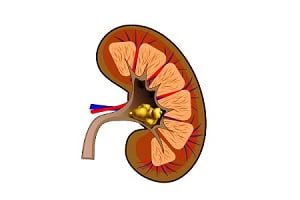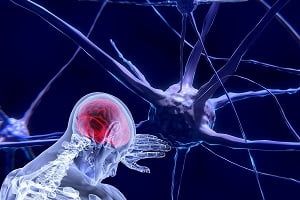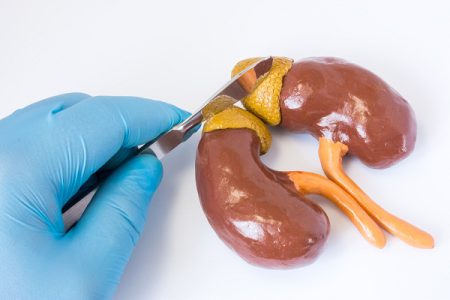Neuroblastoma is a solid tumor or cancer that occurs in the developing cells of the sympathetic nervous system. The cells responsible for neuroblastoma formation are called neuroblasts. The majority of neuroblastomas (almost 65%) originate in the adrenal glands which are located on top of the kidneys. Neuroblastoma is the most common malignant neoplasm that mostly occurs in neonates.
What Is High-Risk Neuroblastoma or Stage 4 Neuroblastoma?
Stage 4 neuroblastoma is a high-risk neuroblastoma. At this stage, cancer has spread to remote sites of the body like distant lymph nodes, bone, liver, skin, bone marrow, and other organs.
Neuroblastoma tumors are highly variable in their clinical behavior. Some are easily treated while the others are very aggressive. High-risk neuroblastoma treatment is very difficult for low and intermediate-risk tumors. High-risk neuroblastoma category includes all patients with stage 4 disease diagnosed after one year of age. It is therefore called stage 4 or high-risk neuroblastoma.
Some patients with multiple copies of MYCN oncogenes are also included in the high-risk neuroblastoma category even if their tumor has not metastasized to distant parts. The probability of cure can be increased in highly aggressive stage 4 high-risk neuroblastoma with the help of intensive therapy.
Investigational Therapies for High-Risk Neuroblastoma
Following therapies are currently used in clinical trials for high-risk neuroblastoma:
Induction Chemotherapy
This type of chemotherapy doesn’t require marrow or PBSC support. Drugs used in this therapy include cyclophosphamide, doxorubicin, etoposide, ifosfamide, cisplatin, carboplatin, vincristine, and topotecan.
More: Congenital Neuroblastoma in Children
Local Radiation
Local radiation can be given to a localized area including the tumor.
Surgery
Surgical procedures involve partial total removal of the tumor.
Retinoid Therapy
Retinoid therapy can be given to high-risk neuroblastoma cells for inhibiting their growth. For example, Accutane (13- cis-retinoic acid) is a retinoid that restricts the growth and differentiation of neuroblastoma cells and prevents them from converting into more normal-appearing cells. Similarly, there is another retinoid called fenretinide which can kill neuroblastoma cells.
Antibody Therapy
Antibody therapy is given so that they can kill tumor cells by sticking to tumor cells along with cytokines which ultimately release white blood cells. These white blood cells get attached to the tumor cells via an antibody and then destroy the tumor cells. For example, ch14.18 antibody, 3F8 antibody etc.
MIBG (meta-iodobenzylguanidine) Therapy
MIBG is a radioactive substance that gathers in neuroblastoma tumors. The concentration of the MIBG at the tumor results from the tumor pulling in the MIBG, concentrating the radiation into the tumor. This provides very high doses of radiation to the tumor cells.
Vaccine Therapy
Vaccine therapy is used for injecting some substances in the body that will evoke the body’s immune response for fighting against the tumor. Injection of vaccines results in the production of antibodies in the patient’s body and these antibodies could be effective in attacking neuroblastoma cells. Such antibodies are called anti-idiotypic antibodies.
Stage 4 or Special Neuroblastoma
Stage 4 is also called special neuroblastoma. It usually occurs in children below the age of 1 year. The neuroblastoma at this stage affects only one side of the body and may spread to lymph nodes on the same side of the body. This stage neuroblastoma may spread to liver, skin, and/or the bone marrow, however, less than 10% of marrow cells become cancerous.
Survival Rate and Life Expectancy in Stage 4 (Metastasis)
The five-year survival rate of high-risk neuroblastoma is almost 40% to 50%. For attaining a survival rate of at least 50% in high-risk neuroblastoma, there is a requirement of intensive multimodality treatment. Understanding the biology of high-risk neuroblastoma may help in identifying the factors responsible for changing the outcomes of patients, especially ultra high–risk neuroblastoma patients.
Researchers are trying to investigate ways to improve outcomes and are also trying to evaluate the role of precision medicine in this high-risk patient population.







